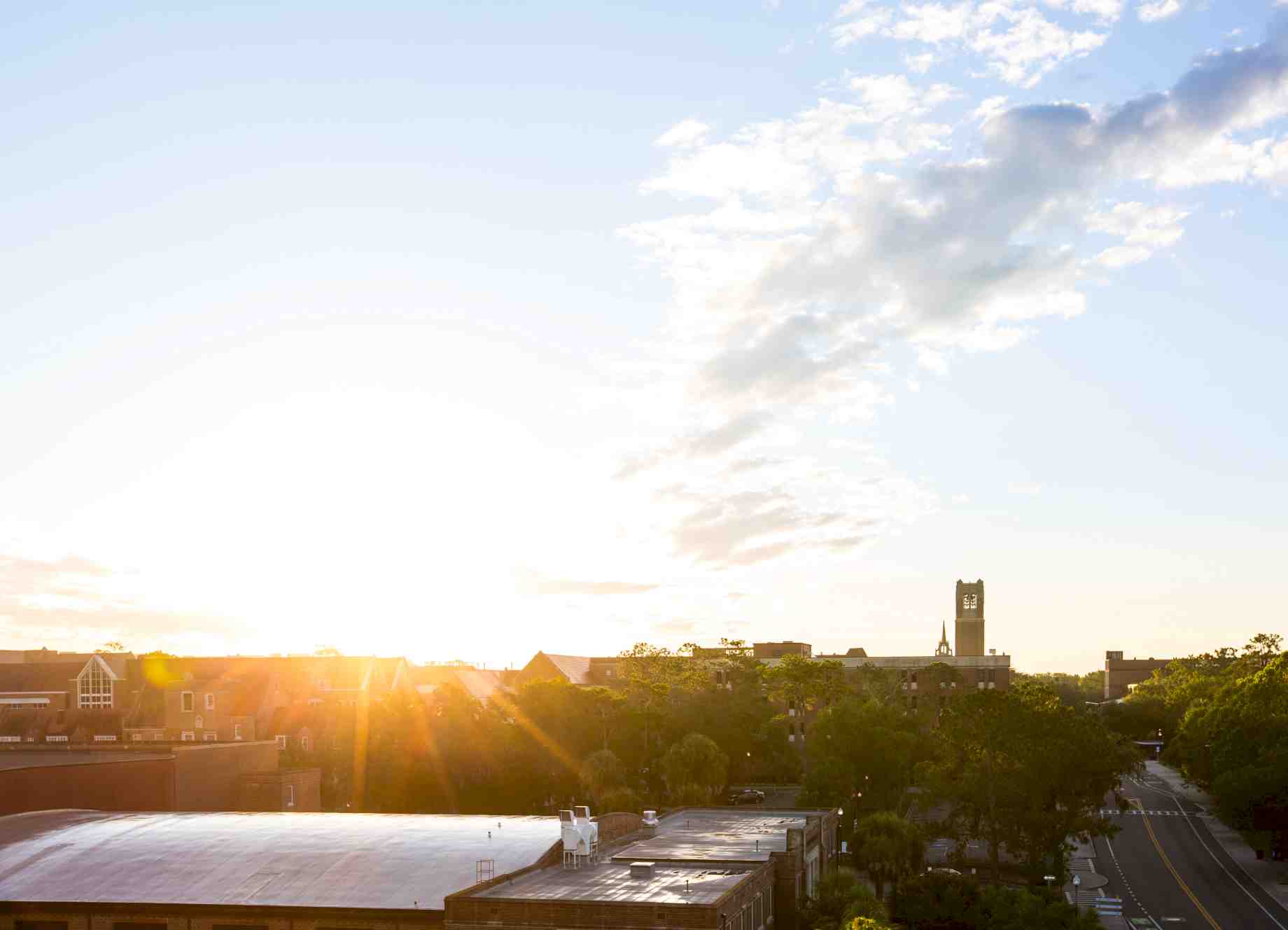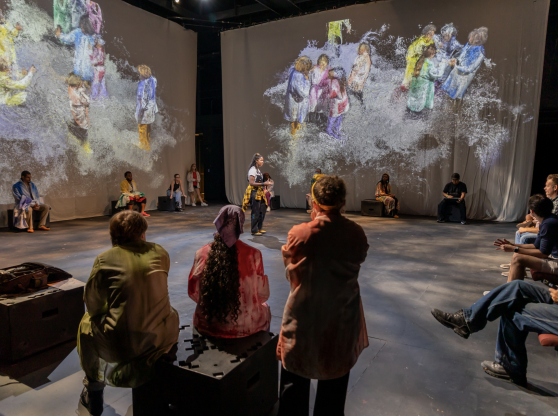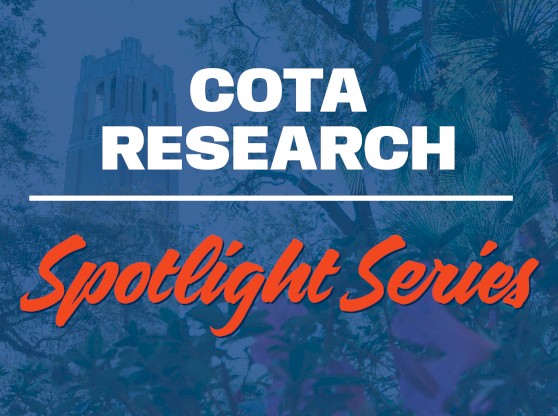Typically, Barbara Mitola is charged with overseeing the hiring of about five faculty positions each year.
This year, that number quadrupled.
With the University of Florida’s initiative to hire 500 new faculty, the majority of the College of the Arts faculty and staff have been working to fill 20 positions. But unlike the normal replacement and turnover positions that need to be filled, most of these positions are new faculty lines.
Mitola, director of human resources for the UF College of the Arts, said the college’s faculty is increasing by about 25% as a result of the two-year Faculty 500 initiative—adding a total of 28 new positions in 2018 and 2019.
“With that level of increased opportunities, it was imperative that we decide how we wanted that new effort to be directed,” Mitola said.
Together, led by Dean Onye Ozuzu, the college’s faculty and staff developed a “metanarrative”—a unifying call to attract candidates that identify as change-makers.
- Read the Metanarrative
The University of Florida College of the Arts intends to be a transformative community, responding to and generating paradigmatic shifts in the arts and beyond. As artists and scholars, we embrace the complexity of our evolving human experience and seek to empower our students and faculty to shape that experience fearlessly through critical study, creative practice, and provocation. We seek colleagues who identify as change-makers. We seek colleagues who will prepare students to access and unsettle centers of power in a radically changing world. We seek colleagues who will position emerging artists and researchers as catalysts for equity on local and global levels.
Scott Wilson, associate professor of jazz studies and director of the UF Jazz Band, said the metanarrative made candidates more excited to apply to UF.
“People were saying ‘We’re so glad UF is leading the way.’ The candidates are looking in and thinking they finally have a chance,” Wilson said. “They're not coming here to be marginalized right off the bat.”
While exciting for many, this criteria was also uncharted territory for many faculty members involved in the search processes.
Committees were challenged to look beyond their typical criteria for academic professionals, and Wilson said it took a lot of education through meetings and reading rules and regulations.
“The metanarrative is a very bold statement, and it really makes us look carefully for the people that are both change-makers and candidates that also have the typical things we look for in an academic,” said Wilson, who chairs the search for the Maker in Residence position and served on the committee for the Professor of Music Business and Entrepreneurship.
In addition to the weight we would normally give to a candidate's research profile, Wilson said the search committee also looked extensively at how candidates interfaced with colleagues and how bold they were in their work.
The Quest for a Unicorn
The education and training provided to the search members focused heavily on diversity, equity and inclusion.
In order to avoid bias in the decision process, Associate Professor of Art History Maya Stanfield-Mazzi said this new hiring wave required the committees to develop clear criteria for their candidates.
She chaired the search for a new professor in museum studies and said the committee took a full month to put together the job description.
Their quest: Find a unicorn.
Ideally, they wanted a candidate with a strong background in research, likely someone with a Ph.D., that would be able to mentor master’s students with their thesis projects.
But Stanfield-Mazzi explained that not a lot of universities offer a Ph.D. in museum studies, so typically a candidate for this position would have completed research in a related field.
“For example, it could be an art historian who worked with museum objects,” she said. “But overall—balancing some differences in opinion—the committee wanted someone whose central research focus is museums.”
The committee decided to open their criteria up to candidates with a Master of Arts, instead of limiting it to those with Ph.D.
“We were nervous,” she said. “How would we find that unicorn?”
But the metanarrative proved to assist in casting a wider net of applicants, and it turned out that the finalists for the museum studies position did come with Ph.D.s with research focii in museum studies.
“The candidates that really stood out were the ones engaging with that narrative,” Stanfield-Mazzi said.
A Fresh Perspective
Each committee was also equipped with an outside consultant, called the provocateur.
Appointed from outside of the hiring department, the provocateur’s role was to remind the committee about the goals of the metanarrative and the goals for diversity, equity and inclusion.
Angelos Barmpoutis, associate professor in the Digital Worlds Institute, served as a provocateur for searches in the School of Art + Art History and the School of Theatre + Dance.
“As a provocateur, I was trying to offer this outside perspective to see who could potentially be a change-maker,” he said, “who might be a good candidate although may deviate from the standard stereotypical profile of candidates that we considered in the past."
He noted that the process came with a set of challenges, particularly in defining the role of the provocateur for the first time, but that Mitola and human resources were by his side for the entire process.
Mitola said being as clear as possible from the start and providing both the committee and provocateur with support was essential.
“Challenging your own unconscious biases can be deeply unsettling and feel aggressive and devaluing,” Mitola said. “That’s a very reasonable, very human response. Because of the built-in, intentional differences the committee composition sets up, the provocateurs often find themselves being the apparent challengers of bias. That’s a difficult role to play.”
Support for provocateurs included periodic meetings to share successes, challenges and confusion points.
Overall, Mitola said the process opens up candidate assessment conversations outside one's normal tribe or school.
“Sometimes we think we are being open and inclusive if other people think our perspectives are open and inclusive as well,” Mitola said. “But if the people agreeing with you are your regular peer group, there’s a high likelihood that they have the same unintentional blinders on as you. Opening those conversations up beyond the department increases the likelihood that the process will be less affected by unconscious biases.”
The provocateur process also created connections between people of different areas within the college, increasing chances for productive interdisciplinary collaborations.
“This generates a very interesting collision,” Barmpoutis said. “We are friends now. But it's deeper than that. I think creating this very strong bond between faculty members across disciplines is very valuable. I think I gained a lot as a provocateur out of this process.”
With this growing conceptual network that stretches across the college, this process represents an important step towards cultivating a productive and fertile environment that welcomes and facilitates the start of the new faculty's UF careers.
New Faculty, New Possibilities
In total, 28 new faculty lines will be added to the College of the Arts in the course of two years.
For some areas, these positions are filling needed roles, such as augmenting a music performance education with business skills needed to succeed in the music industry.
“As we survey students beyond graduation to find out what they wish they would have received, music business is at the very top of their list,” Wilson said. “They didn't learn about contracting and licensing and marketing and entrepreneurship and how to turn their skills into a marketable product. It's the stuff the kids have always wanted.”
In other areas, the new hires allow for an expansion in new fields and technologies. With a newly launched master’s focused on augmented and virtual reality in the Digital Worlds Institute, Barmpoutis said the new faculty will steer the program and offer new possibilities for AR and VR education.
“If we onboard the new hires in ways that help them flourish, the units, the college and UF will start making hitherto unforeseen, exciting changes to how we do the work” Mitola said. “We hope to engage our new colleagues to change the college for the better. We will evolve in ways we couldn’t have imagined because we hadn’t had the additional benefit of these new perspectives.”
Some faculty initially felt hesitant about the process, but in the end praised its benefits. Many cited a gain in professional development and growth throughout the hiring process.
“I hope that this will continue for the following years,” Barmpoutis said.



